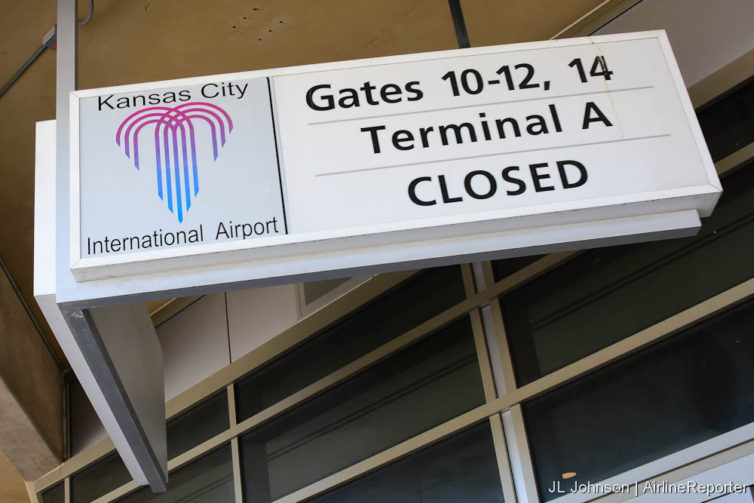
Kansas City International’s Terminal A Has Been Closed since January 8, 2014
Airline consolidation, the move to bigger planes, and trimming of under-performing flights has resulted in less need for gate space in all but a few privileged focus cities and hubs across the United States. Kansas City International Airport (MCI) or as we locals call it, “KCI,” is the 39th-busiest airport in the country and has seen the effects of this first-hand. As airlines began to sunset (we’ll miss you, Braniff, TWA, and Vanguard) and consolidation spread across the industry, it became apparent that it was time to consolidate terminals.
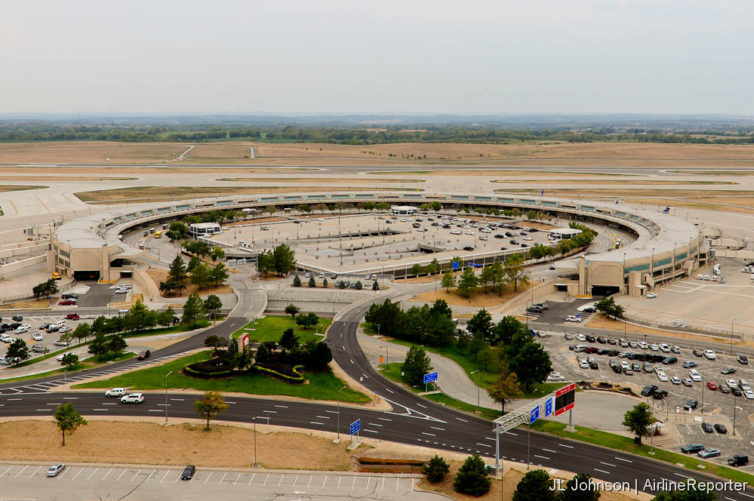
Terminal A seen from the ATC tower in August, 2012
On January 8, 2014, US Airways Flight 1948 departed Kansas City International’s Terminal A for Charlotte. This would be the last regularly scheduled operation out of the 42-year old structure. This was a bittersweet milestone for travelers of all sorts in our two-state metropolitan area, albeit for very different reasons. For those not in the know, our airport is comprised of three thin, horseshoe-shaped terminals. This was a revolutionary design for its day, but has proven a real challenge for airlines, passengers, and airport operations in recent history.
Consolidation aside, moving operations out of Terminal A allowed for clearing space for what many agree is a longer-term solution to ensure Kansas City remains competitive with its local peers: A single, modernized, consolidated terminal. More on that story and the perplexing controversy over this much-needed, PFC-funded infrastructure project some other time.
For nearly four years, this terminal has been out of reach of the public eye while the aviation industry has continued to work through its various consolidations. AirlineReporter was granted rare access to the terminal while awaiting the arrival of the TriStar Experience L-1011 late last month. Join us as we stroll down memory lane…
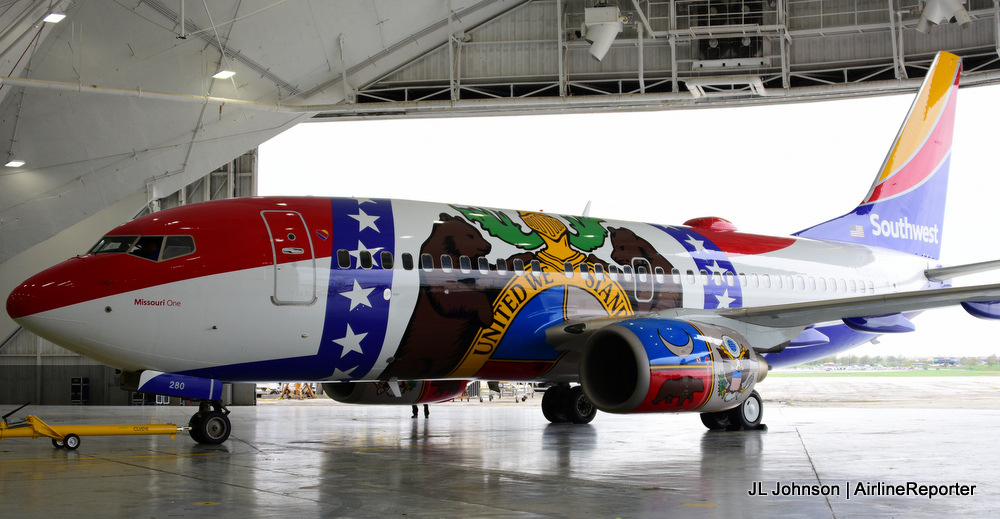
N280WN, the new Missouri One, pushes out of an ATI hanger in Kansas City
I adore Southwest Airlines and I’m a proud Missourian. Can you imagine how excited I was to attend last week’s special event?! As soon as my Missouri-centric invite came through, I knew we were dealing with a Missouri One, but held back as I didn’t want to ruin the fun. Those who fancy themselves Southwest experts knew something might be up when N280WN (Penguin One- a SeaWorld plane overdue for de-livery as a result of contract termination) entered the paint shop in Spokane, Washington but never left. What could cause such a delay in the paint shop? A new livery, of course!
My first thought when I put two and two together: “Isn’t our state flag kind of boring?” Okay, fine. It is. But our state seal is pretty sweet and thankfully the folks at Southwest and their advertising firm GSD&M took a bit of artistic privilege. The result? My new favorite special-liveried bird. This isn’t the first time they’ve had little to work with, yet hit a home run. Has anyone seen Florida or Nevada’s state flags? Sort of dull, but absolutely stunning on a 737.
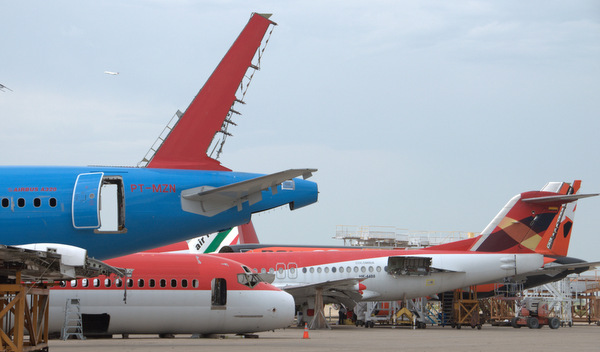
Former TAM A320 seen in blue. Two former Avianca birds, an MD-83 and a Fokker F100. Photo by JL Johnson
This is the first in a series of posts I have planned with a focus on the Midwest’s impact on aviation. Dismissed as flyover country by some, much of aviation’s history occurred right here in the middle of the US. It’s not just the past we will be exploring- the Midwest is very much involved in aviation today, and is well positioned to support the evolution of aviation in the future. Join me as we explore the facets of aviation, right here from the heart of America.
What is Jet Midwest? They are a full service MRO (maintenance repair overhaul) firm that is also involved in the purchasing, painting, leasing and recycling of planes.
When Jet Midwest buys planes they are overhauled, leased and/or sold, or parted out. It’s a sad day when a flying machine meets its demise. However, at Jet Midwest, through the sacrifice of one plane, dozens or hundreds more across the globe are able to stay in service. Their motto for what they do: ’œParts to Planes.’
I was recently invited out to tour their huge facility on the southeast corner of the Kansas City International Airport property. The 2.4 million square foot facility, formerly of American Airlines and before that TWA, has hangars that can store multiple 747s, with many more narrow bodies between.
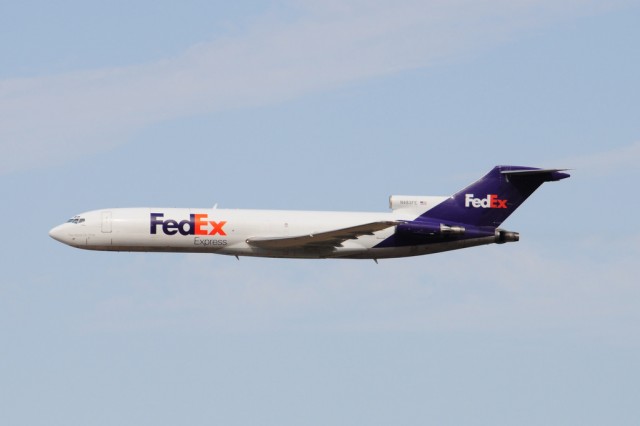
FedEx Boeing 727, named Colin, arrives to Kansas City. Image by JL Johnson.
A blog reader and aviation fan, JL Johnson (@user47), was recently able to witness the last flight and donation of a FedEx Boeing 727. He agreed to share his story and photos with the blog. Here is his story in his own words:
I suspect it’s no news to readers of
AirlineReporter.com, but we aviation enthusiasts are a unique group of folks. Of all the peer-groups I belong to, aviation geeks, that is, avgeeks, are the most loyal, diverse, and enthusiastic I have encountered. One thing I’ve noticed about avgeeks is they always want to deepen their bonds and connections to the industry. Whether it’s catching the newest livery while plane spotting and sharing it on social media, hopping on an inaugural flight, or social networking our ways into typically non-public areas with great aerodome views, we’re always curious. And, with this, I’ve noticed a trend.
It seems the vast majority of folks are focused on what’s new: New planes, new routes, new airlines, etc. And while this is great, it seems I’m more interested in what’s old. Maybe it’s my obsession with history, but I want to be a part of, or at least witness history. Recently, I got that opportunity.
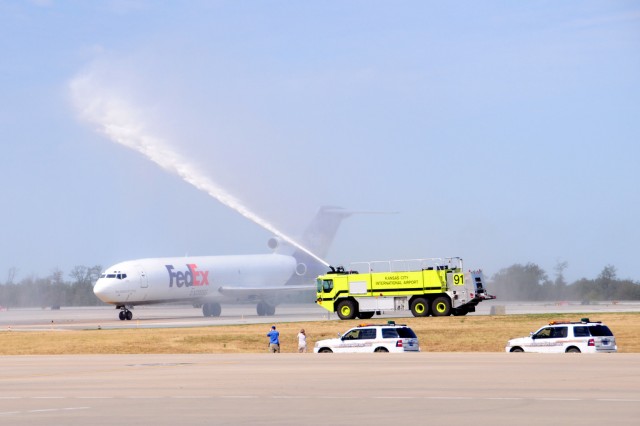
A proper airport welcome at KCI. Image by JL Johnson.
On Wednesday, August 1st at 10:14 AM CDT, a 34-year old Boeing 727 with registry N483FE touched down on Kansas City International Airport’s (KCI) runway 19R marking the end of its life with 34,671 flight hours.
The plane, named Colin, after the child of a FedEx courier, was originally delivered to Braniff Airways in 1978 as a passenger liner. In May of 1990 FedEx Express took ownership of the plane and oversaw its passenger to freighter (P2F) conversion. Shortly after, it entered the FedEx Express fleet where it served alongside dozens of other 727s for 22 years.
While the termination of FedEx Express flight 9044 from Memphis, TN marked the end of the sky for a plane, it highlights a quickening retirement plan for this and other tri-jets in fleets across the world. With higher maintenance costs for older planes and drastically more fuel-efficient alternatives on the market, planes like Colin have quickly fallen out of favor.
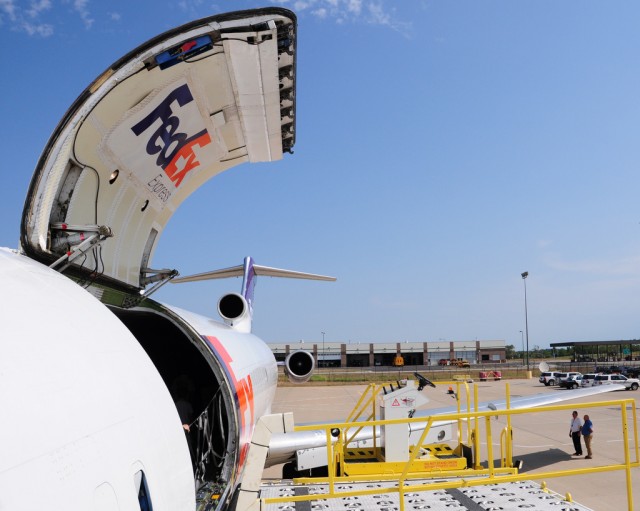
Those Boeing 727s that were converted to freighters increased their lifespan, but for Colin, he is about to start a new chapter. Image by JL Johnson.
So, what’s one of the world’s largest airlines to do with all of these old fuel inefficient planes? According to David Sutton, managing director of Aircraft Acquisition and Sales for FedEx, the solution was simple: Donate the planes to the communities they serve to support educational endeavors.
In 1995 FedEx Express launched their aircraft donation program with the donation of a plane to the FAA who at the time was interested in studying the effects of corrosion and fatigue on aging aircraft. Since then FedEx has donated over 50 airplanes to charities, museums, and airports.
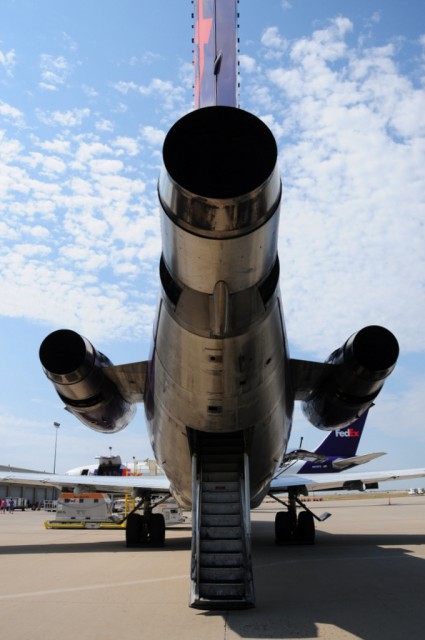
You are not a true avgeek if you don’t love a tri-holer. Image by JL Johnson.
Kansas City Aviation Director Mark VanLoh gladly accepted FedEx’s donation which the airport intends to use for emergency response training. Mr. VanLoh shared with the audience that with this plane, the airport and its crucial emergency responders will no longer be reliant on the generosity of its constituent airlines to loan their planes for training exercises.
In the coming days Colin will be relocated to the southeast side of the airport near an on-site overhaul base where it will lose its engines. While two of the engines will in some fashion make their way back into service, via parts or spares, one will be preserved and donated to the National Airline History Museum where patrons can visit and learn about the low-bypass jet engines that helped usher in the modern era of aviation.
37 PHOTOS FROM THE FEDEX EVENT
About the author: I’m a Kansas City, Missouri based Senior Business analyst with a ridiculous obsession for all things aviation. As an avid plane spotter, I can often be found on or near airport property with a telephoto lens. Let’s get social! I’m on twitter and most other social media as @user47 and occasionally blog over at http://jlsblog.com







